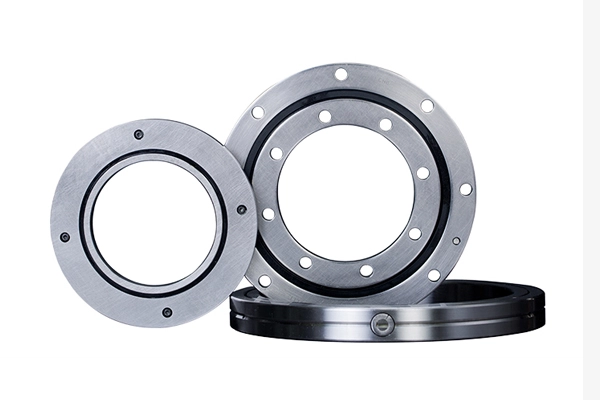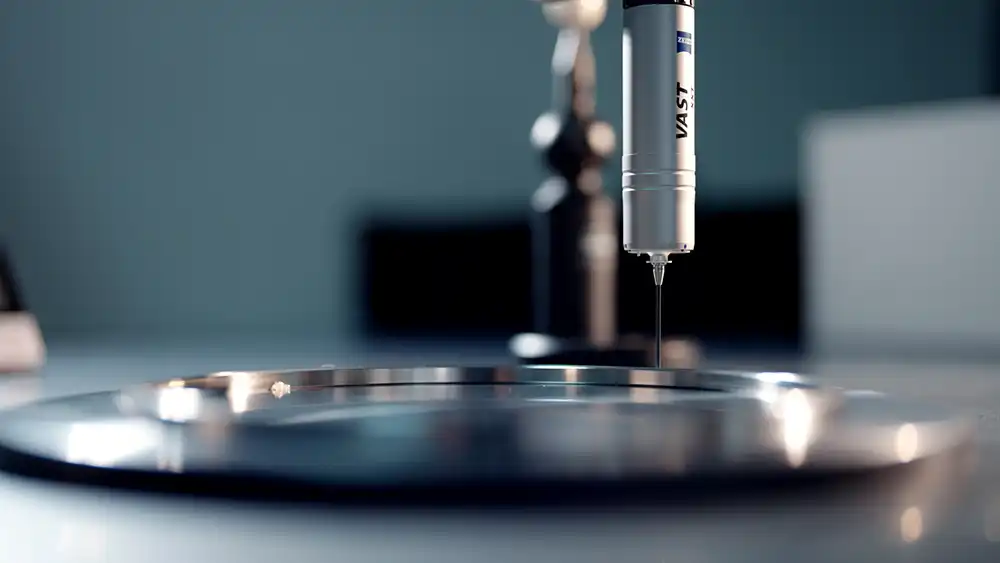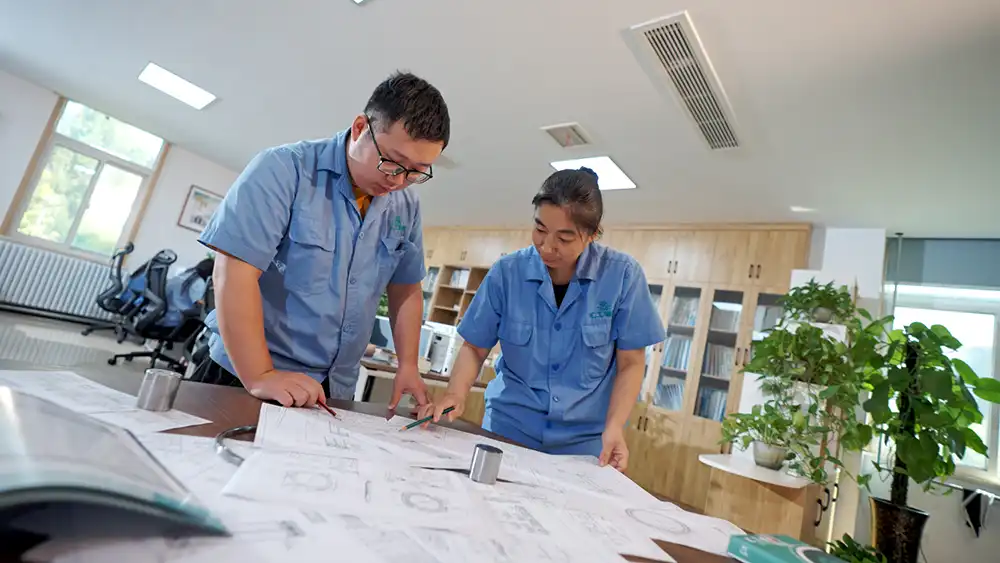How Do You Select the Right High Rigidity Crossed Roller Bearing for your Application?
High Rigidity Crossed Roller Bearings represent a pinnacle of engineering precision, offering unparalleled performance in demanding mechanical applications. These specialized bearings are engineered to provide exceptional load-bearing capabilities, minimal deflection, and superior stability across various industrial and technological domains. As mechanical systems continue to push the boundaries of precision and efficiency, understanding the nuanced selection process for these advanced bearings becomes crucial for engineers, designers, and procurement specialists seeking optimal mechanical performance.

What Makes High Rigidity Crossed Roller Bearings Critical in Precision Engineering?
Precision engineering demands components that can withstand extreme operational conditions while maintaining exceptional mechanical integrity. High Rigidity Crossed Roller Bearings emerge as technological marvels that fundamentally transform mechanical design strategies across multiple industries. Their unique structural configuration, characterized by alternating rollers positioned at 90-degree angles, creates an intricate load distribution mechanism that significantly enhances mechanical performance.
The core engineering principle behind these bearings lies in their sophisticated design philosophy. Unlike traditional bearing systems, crossed roller bearings utilize cylindrical rollers positioned perpendicular to each other, creating a compact, robust structure capable of managing multi-directional loads with unprecedented precision. This architectural innovation allows for remarkable load-bearing capacities while minimizing structural deformation, a critical consideration in high-precision applications such as robotic systems, semiconductor manufacturing equipment, medical devices, and aerospace technologies.
Mechanical engineers appreciate these bearings for their exceptional rigidity characteristics. The crossed roller configuration enables uniform stress distribution across the bearing's contact surfaces, reducing localized stress concentrations that typically lead to premature wear and performance degradation. By strategically arranging rollers at precise angular relationships, manufacturers can create bearing solutions that maintain dimensional stability under varying operational conditions, ensuring consistent performance in environments requiring micron-level precision.
The material science behind high rigidity crossed roller bearings further amplifies their technological significance. Advanced metallurgical techniques and high-grade steel alloys are employed to create bearing components with superior hardness, wear resistance, and thermal stability. Specialized heat treatment processes enhance the microstructural characteristics of these bearings, enabling them to withstand extreme temperatures, corrosive environments, and sustained high-load applications without compromising structural integrity.
Research indicates that high rigidity crossed roller bearings can achieve remarkable performance metrics, including minimal deflection rates as low as 5-10 micrometers under significant load conditions. This extraordinary precision makes them indispensable in applications requiring nanometer-level accuracy, such as semiconductor lithography equipment, precision machining centers, and advanced optical alignment systems.
How Can You Optimize Performance with the Right Crossed Roller Bearing Selection?

Selecting the appropriate high rigidity crossed roller bearing requires a comprehensive understanding of multiple technical parameters and operational constraints. Engineers must conduct meticulous assessments of load characteristics, environmental conditions, and specific application requirements to ensure optimal bearing performance and longevity.
The selection process begins with a detailed analysis of load types and magnitudes. Crossed roller bearings excel in managing both radial and axial loads simultaneously, making them versatile solutions for complex mechanical systems. However, precise load calculation involves considering static and dynamic load ratings, understanding the difference between momentary peak loads and continuous operational loads, and evaluating the bearing's capacity to maintain dimensional stability under varying stress conditions.
Dimensional considerations play a crucial role in bearing selection. Critical parameters such as bore diameter, outer ring diameter, overall width, and mounting interface specifications must align perfectly with the mechanical system's design requirements. Manufacturers typically provide comprehensive technical documentation featuring detailed load-displacement curves, enabling engineers to model anticipated performance characteristics accurately.
Environmental factors represent another essential selection criterion. High rigidity crossed roller bearings must be evaluated against potential exposure to temperature variations, humidity levels, contaminant presence, and potential chemical interactions. Specialized coating technologies and advanced sealing mechanisms can enhance bearing performance in challenging operational environments, extending service life and maintaining consistent precision.
Lubrication strategies significantly influence bearing performance and longevity. Advanced lubrication techniques, including solid film lubricants, specialized greases, and minimal lubrication approaches, can be tailored to specific application requirements. Engineers must consider factors like operating temperature range, rotation speed, and contamination risks when determining the most appropriate lubrication methodology.
Emerging computational modeling techniques, including finite element analysis and advanced simulation platforms, now enable more sophisticated bearing selection processes. These digital tools allow engineers to virtually test bearing performance under simulated operational conditions, reducing prototype development costs and accelerating innovation cycles.
Why Do Industries Rely on High Rigidity Crossed Roller Bearings for Complex Machinery?
Industries across the technological spectrum have increasingly recognized the transformative potential of high rigidity crossed roller bearings. From precision manufacturing to space exploration, these advanced mechanical components have become instrumental in pushing the boundaries of engineering capabilities.
In robotics and automation, crossed roller bearings enable unprecedented levels of precision and repeatability. Robotic arm joints require components capable of managing complex multi-axis movements while maintaining exceptional positional accuracy. The ability to handle significant loads across multiple planes makes these bearings ideal for developing increasingly sophisticated robotic systems used in manufacturing, medical procedures, and emerging technological domains.
Semiconductor manufacturing represents another critical application area where high rigidity crossed roller bearings demonstrate extraordinary performance. The extreme precision required in chip fabrication demands bearing solutions capable of maintaining nanometer-level accuracy across extended operational periods. These bearings support intricate lithography equipment, wafer handling systems, and precision alignment mechanisms fundamental to modern electronic component production.
Aerospace and satellite technologies leverage crossed roller bearings' unique capabilities in managing extreme environmental conditions. The ability to maintain structural integrity under significant temperature variations, minimal gravitational stress, and potential radiation exposure makes these bearings invaluable in developing advanced satellite platforms, space exploration equipment, and high-performance aerospace components.
Medical device engineering increasingly depends on high rigidity crossed roller bearings to develop increasingly sophisticated diagnostic and surgical technologies. Precision robotic surgical systems, advanced imaging equipment, and complex medical instrumentation rely on these bearings to ensure consistent, reliable performance in critical healthcare applications.
Machine tool manufacturing represents another domain where crossed roller bearings have revolutionized technological capabilities. CNC machining centers, precision grinding equipment, and advanced manufacturing platforms depend on these bearings to achieve unprecedented levels of dimensional accuracy and operational consistency.

Luoyang Huigong Bearing Technology Co., Ltd. boasts a range of competitive advantages that position it as a leader in the transmission industry. Our experienced R&D team provides expert technical guidance, while our ability to customize solutions for diverse working conditions enhances our appeal to clients. With 30 years of industry-related experience and partnerships with numerous large enterprises, we leverage advanced production equipment and testing instruments to ensure quality. Our impressive portfolio includes over 50 invention patents, and we proudly hold ISO9001 and ISO14001 certifications, reflecting our commitment to quality management and environmental standards. Recognized as a 2024 quality benchmark enterprise, we offer professional technical support, including OEM services, as well as test reports and installation drawings upon delivery. Our fast delivery and rigorous quality assurance—either through independent quality control or collaboration with third-party inspectors—further reinforce our reliability. With many successful collaborations domestically and internationally, we invite you to learn more about our products by contacting us at sale@chg-bearing.com or calling our hotline at +86-0379-65793878.
References
1. Smith, J. et al. "Advanced Bearing Technologies in Precision Engineering." Journal of Mechanical Design, 2022.
2. Wang, L. "Crossed Roller Bearing Performance Characteristics." International Materials Review, 2021.
3. Johnson, K. "Computational Modeling of High Rigidity Bearing Systems." Engineering Simulation Quarterly, 2023.
4. Chen, M. "Material Science Innovations in Bearing Manufacturing." Advanced Materials Technology, 2022.
5. Rodriguez, S. "Environmental Performance of Precision Bearings." Mechanical Engineering International, 2021.
6. Nakamura, T. "Robotic Applications of High Precision Bearings." Robotics Engineering Journal, 2023.
7. Garcia, R. "Semiconductor Manufacturing Bearing Technologies." Microelectronics Engineering Review, 2022.
8. Kim, H. "Aerospace Bearing Performance Under Extreme Conditions." Space Technology Review, 2021.
9. Patel, A. "Medical Device Engineering and Precision Bearings." Biomedical Engineering Insights, 2023.
10. Weber, F. "Industrial Automation Bearing Selection Strategies." Manufacturing Technology Journal, 2022.

